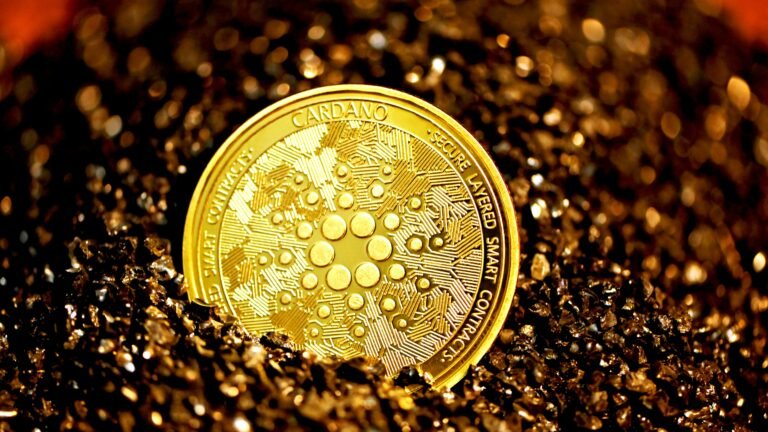- ERC-20 defines a technical standard for fungible tokens on Ethereum.
- ERC-20 tokens are widely used in DeFi, stablecoins, and dApps.
- ERC-20 smart contracts automate token creation, management, and transfer.
- Top tokens include USDT, USDC, LINK, UNI, and SHIB.
- Despite high gas fees and scalability issues, ERC-20 remains integral to Web3.
What Is ERC-20?
ERC-20 is the most widely used token standard on Ethereum, defining how fungible tokens behave on the blockchain. Fungible means each token is identical in type and value to another. Created in 2015 and formally accepted in 2017, ERC-20 outlines functions every compliant token must have, ensuring interoperability and compatibility within the Ethereum ecosystem.
History and Purpose of ERC-20
Proposed by developer Fabian Vogelsteller in 2015, ERC-20 was born from the need for a uniform token framework. Prior to its creation, Ethereum-based tokens often lacked compatibility. ERC-20 solved this by defining six essential functions and two mandatory events smart contracts must include. Since 2023, ERC and EIP have become separate repositories for application-level and network-level upgrades.
Core Functions of ERC-20 Tokens
Every ERC-20 token must implement these key functions:
- totalSupply(): Returns the total number of tokens.
- balanceOf(): Checks a user’s balance.
- transfer(): Sends tokens to another address.
- transferFrom(): Transfers on behalf of another address.
- approve(): Allows delegated accounts to spend.
- allowance(): Checks the amount a spender is approved to use.
Smart contracts for ERC-20 tokens are typically coded in Solidity.
ERC-20 Wallet Addresses
ERC-20 tokens are stored in Ethereum-compatible wallets. These addresses start with “0x” and are 42 characters long. Common wallet types:
- Hot Wallets: MetaMask, Trust Wallet, Coinbase Wallet
- Cold Wallets: Ledger Nano X, Trezor Model T
Wallets must be funded with ETH to pay gas fees when interacting with ERC-20 tokens.
ERC-20 vs. BEP-2 vs. BEP-20
| Feature | ERC-20 | BEP-20 | BEP-2 |
|---|---|---|---|
| Network | Ethereum | BSC | Binance Chain |
| Smart Contracts | Yes | Yes | No |
| Token Examples | USDC, LINK | CAKE, SFM | BTCB, FTM |
| Speed | 13s/block | 2s/block | 2s/block |
| Fees | High | Low | Low |
How to Create an ERC-20 Token
- Learn Solidity and Ethereum basics.
- Write a smart contract using standard ERC-20 functions.
- Set parameters like name, symbol, total supply.
- Deploy using Remix IDE or tools like OpenZeppelin.
- Test on testnet and validate functionalities.
- Launch on Ethereum mainnet after security audits.
Use Cases of ERC-20 Tokens
- Stablecoins: USDT, USDC
- Governance Tokens: MKR, UNI
- Utility Tokens: BAT
- Asset-backed Tokens: Gold, real estate
- In-game Currencies: Used in gaming ecosystems
- Metaverse Tokens: MANA for Decentraland
- DeFi Tokens: COMP, AAVE
Popular ERC-20 Tokens
- USDT: Tether’s dollar-pegged stablecoin
- USDC: Regulated stablecoin by Circle
- LINK: Chainlink’s oracle token
- UNI: Uniswap governance token
- WBTC: Bitcoin tokenized on Ethereum
- SHIB: Meme token powering the Shiba ecosystem
Other Ethereum Token Standards
- ERC-721: For non-fungible tokens (NFTs)
- ERC-1155: Multi-token standard (fungible + NFTs)
- ERC-404: Fractional NFT ownership
- ERC-677: Adds transferAndCall() for smart contract interaction
Benefits of ERC-20
- Seamless interoperability
- Developer-friendly standard
- High liquidity and accessibility
- Widely supported across wallets and exchanges
- Scalable and customizable
Limitations and Risks
- High gas fees during congestion
- Smart contract bugs and vulnerabilities
- Limited flexibility for complex logic
- Regulatory uncertainty in some regions
- Susceptibility to attacks like reentrancy and overflow
Future of ERC-20
The ERC-20 standard remains a foundational pillar for DeFi, tokenized assets, and decentralized apps. Ethereum 2.0 upgrades and L2 chains will enhance scalability and reduce fees. Institutional interest in asset tokenization, DeFi, and compliant stablecoins will further solidify ERC-20’s relevance.
Also Read: Ethereum Eyes $2,000: Will Whale Moves and Network Growth Spark a Rally?
Internal Linking Advice:
- Link to your guides on Ethereum wallets and How to Create a Token within your site.
External Linking Advice:
- Link to Ethereum.org for further reading on smart contracts.
- Link to CoinMarketCap for real-time ERC-20 token prices.
FAQs
- Are ERC-20 tokens the same as cryptocurrencies? Not exactly. Cryptocurrencies like ETH are native to blockchains. ERC-20 tokens are built on Ethereum.
- What is the difference between ERC-20 and ETH? ETH is Ethereum’s native coin used for gas fees. ERC-20 is a token standard for creating fungible tokens.
- What wallets support ERC-20? MetaMask, Trust Wallet, Coinbase Wallet, Trezor, and Ledger all support ERC-20 tokens.
- Is Coinbase an ERC-20 wallet? Yes. Coinbase Wallet supports ERC-20 tokens.
- How are ERC-20 tokens created? Developers write a smart contract using Solidity and deploy it to Ethereum.
ERC-20 continues to define how tokens work on Ethereum and is a catalyst for the growth of DeFi, NFTs, and Web3 innovations. Whether you’re a developer or an investor, understanding ERC-20 is key to navigating the crypto world.


